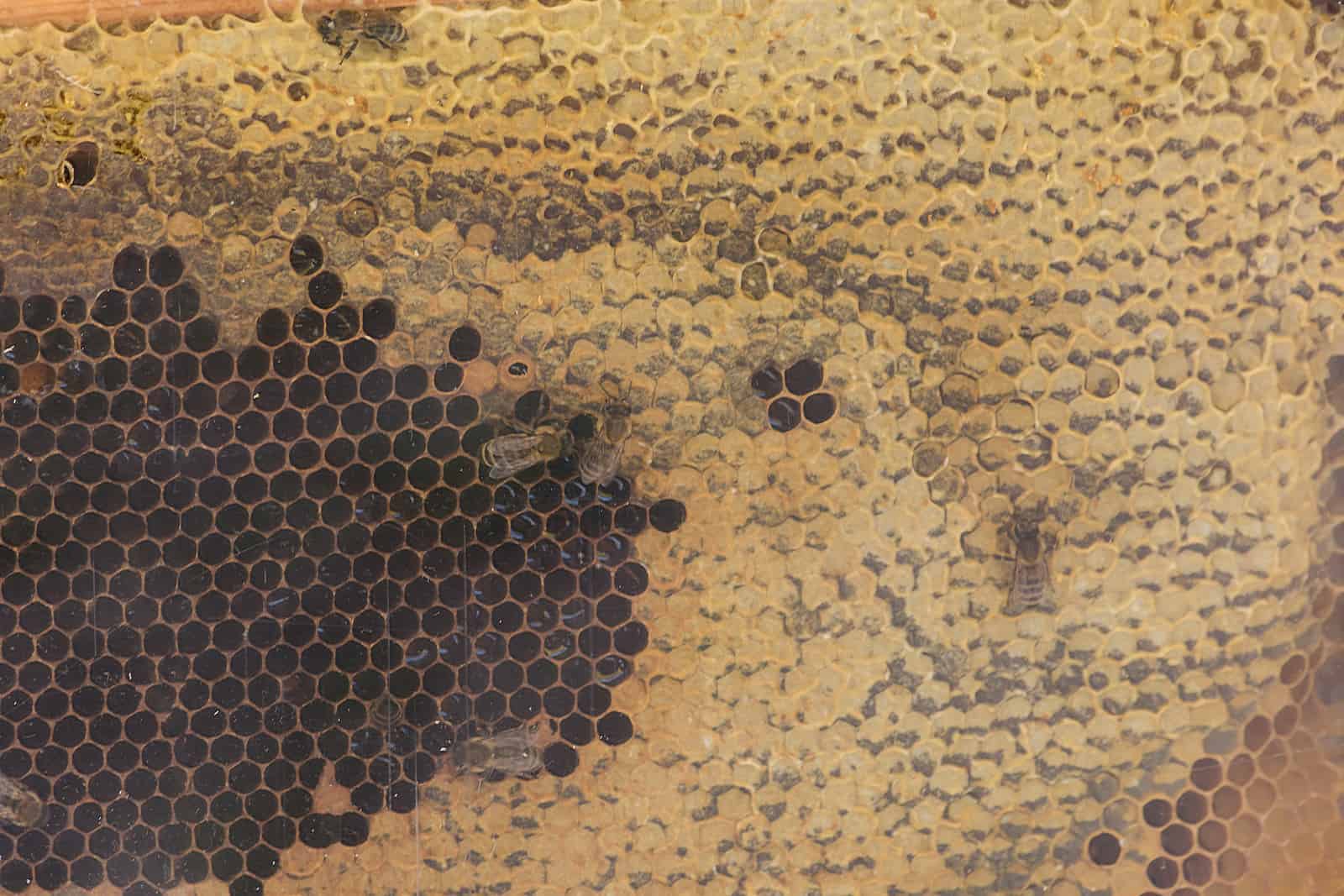In some events, your colony may attract fungal disease caused by Ascophaera apis, and it can cause some serious problems. As a result of this, you may experience dead brood, which can seem devastating. This leads us to this question, will bees clean out a dead brood?
Bees will eventually clean out brood if you give them enough time. However, if your last beehive becomes extinct due to a disease, you’ll want to guarantee yourself that it isn’t in the brood. Therefore, getting a sample tested by the USDA or scraping it off your frames may be the better idea.
As you can now see, bees can clean out dead brood. But, it just may not be the most brilliant idea. This is because the dead brood could have infectious diseases within it. However, if you’re not sure, you can easily remove the brood or get a small sample tested by the USDA for entirely free. During this test, they’ll be able to identify if your dead brood is safe or not.
Will bees clean out dead brood?
As mentioned above, bees can clean out dead brood. However, it doesn’t mean the dead brood is healthy for them. In some cases, it is. Others, it’s not. Deciding whether or not your dead brood is disease-free or not, is hard to determine with the eye. However, luckily for you, the USDA actually offers a completely free testing service.
This testing service is called a “Bee Disease Diagnosis Service”, and its main purpose is to ensure bees have safe habitual environments. You may or may not be aware that bees are currently considered an endangered insects. This is extremely bad for our climate, considering bees play the main role in pollination, which helps grow to produce. Because of this, they offer a free service to encourage people to use their services and protect the bees.
They analyze the bee and bee comb (with or without bee brood), and they’ll test for bacterial, microsporidian, and fungal diseases. Including these diseases, they’ll also check for two species of parasitic mites associated with bees.
As you can see, it’s a superb service and more than worth considering before trying to reinhabit your bee comb. At the end of the day, the last thing you want is another load of bees dying from a disease left inside the brood.
Want to know how you can send a dead brood sample? Check out the below instructions.
How to send a dead brood sample to the USDA
Sending a dead brood sample is super simple, and the USDA has supplied some easy-to-follow instructions to ensure it arrives safe and secure. Here’s how you can send a dead brood sample to the USDA:
- Before you send anything, you need to obtain a dead brood sample. The sample must not be smaller than 2 x 2 inches. For best results, your sample should contain the most dead or discolored brood on your comb. Note, do not send anything that has honey on it.
- The sample should be packed in a spacious, heavy-duty box and wrapped with plenty of paper towels.
- Before taping up the box, make sure you supply your phone number or email, home address, and name.
- You’ll then have to send the goods to the Bee Disease Diagnosis laboratory, and their delivery information can be seen here.
As you can see, it’s fairly easy to send a dead brood sample to the USDA. The only thing you’ll want to be careful of is breaking the sample. So, ensure it’s tightly packed with soft and light material.
What do I do with dead brood?
Once you have your samples back, you can decide on what to do with your dead brood. As you can imagine, if your dead brood gets tested and they find a disease in it, you’ll want to dispose of it from your frames. However, what if your dead brood is disease-free?
Well, if it’s disease-free, you can try to reinhabit it. If you have a large area of dead brood on multiple different frames, it’s best to split them between your beehives. By doing this, the bees will clear the dead brood faster, and it won’t strain them a lot of precious energy.
How does brood die?
The primary source of brood dying is from a disease called American Foulbrood or (AFB) and European Foulbrood (EFB). As you can imagine, they’re somewhat similar, and it’s a bacterium that specially targets brood. Because of this, without a viable brood, the entire colony can collapse, which will be devastating.
This type of bacteria can cause the brood to die, and there’s isn’t any available cure for this type of disease, which is extremely upsetting. Needless to say, you’ll want to monitor your brood to ensure it isn’t showing signs of AFB or EFB development. If you encounter this, you can also remove the part that looks infected and hope for the best. At least by doing this, you’ll have a minimal chance of saving your bee colony.
However, if this does occur, at least you can document it and take notes. Many beekeepers keep documented notes about how well their bees produced during a period of a year, how well they reproduced, what they did differently, etc. From doing this, you’ll have a documented timeline of what you did and then act on the thing you did wrong to cause the AFB or EFB.
Without a doubt, this is the best thing any active beekeeper can do, and you’ll gain some immense benefits from it.
After reading, you should know whether or not bees will clean out a dead brood. As you’re now aware, yes, they would. However, because they would, it doesn’t mean they should. It can be extremely dangerous, depending on the state of the brood. But, if you’re sure it’s not disease-ridden and completely free from parasites, then you can reinhabit bees back into the brood.




